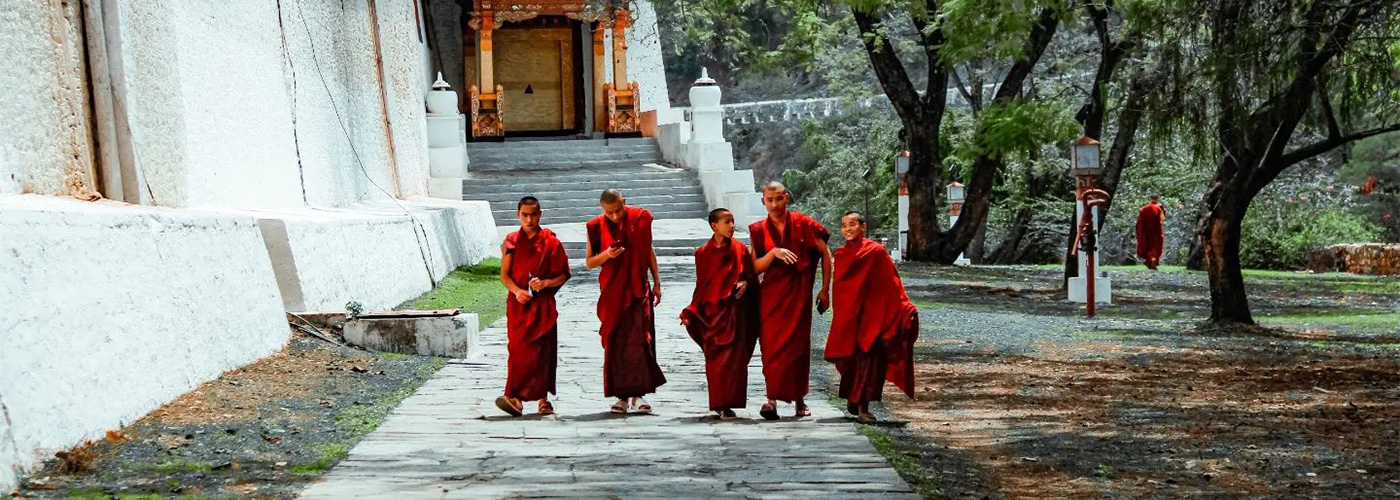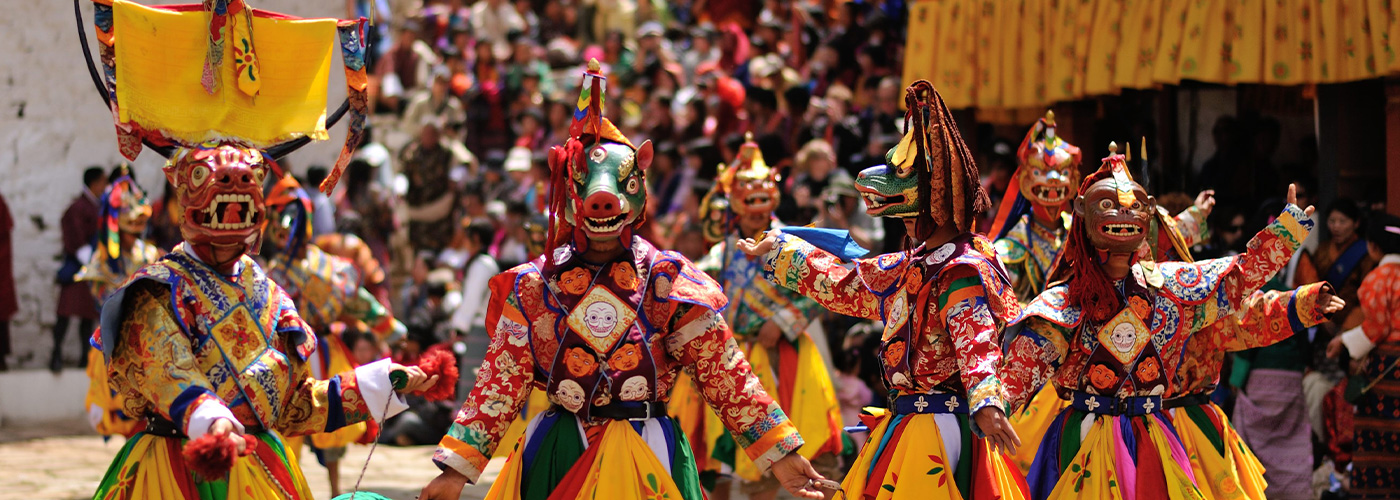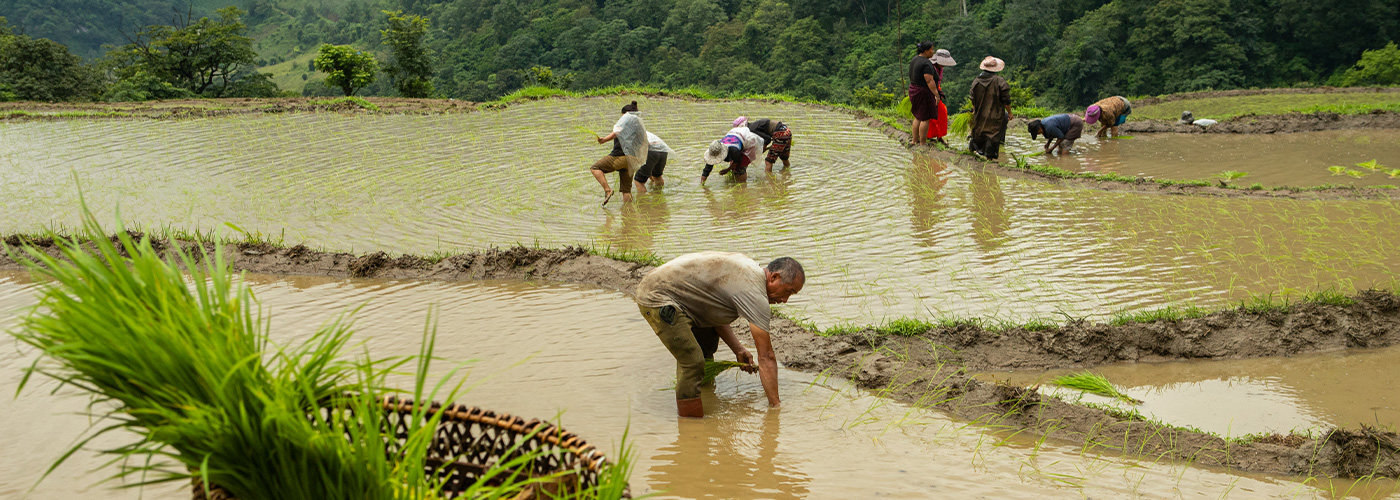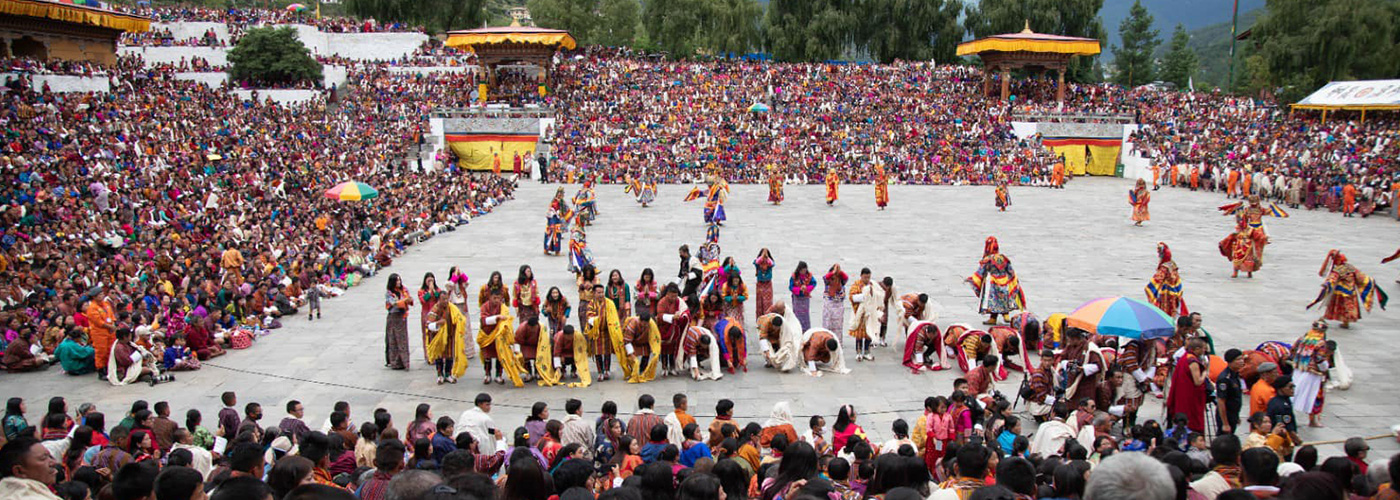
Geography & Nature
Bhutan is a small yet ecologically rich Himalayan kingdom located in South Asia, bordered by China to the north and India to the south. Geographically, it stretches from 26º45’ to 28º10’ N latitude and 88º45’ to 92º10’ E longitude, covering approximately 38,394 square kilometers. The country spans about 330 km east to west and 180 km north to south.
Often described by travelers as a "land of undulations," Bhutan's terrain rises dramatically from the subtropical lowlands at 200 meters above sea level in the south to towering Himalayan peaks over 7,000 meters in the north. Around 72.5% of Bhutan is forested, exceeding the constitutionally mandated minimum of 60%.
Bhutan experiences a wide range of climates—from hot and humid in the south to alpine cold in the north. The country enjoys four distinct seasons:
- Spring: March to May ( Preferred travel season with several festivals)
- Summer: June to August
- Autumn: September to November ( Preferred travel season with several festivals)
- Winter: December to February ( Preferred meditational season)
Thanks to its varied geography and climate, Bhutan is part of a global biodiversity hotspot. It is home to:
- 46 species of rhododendrons
- 300 medicinal plants
- 579 wild orchids
- 30+ bamboo species
The country's rich fauna includes over 200 species of mammals, such as the Royal Bengal Tiger, Snow Leopard, Red Panda, Golden Langur, and Takin—Bhutan’s national animal. Over 678 species of birds have been recorded, including endangered species like the White-bellied Heron and Black-necked Crane.

People & Culture
Bhutan’s population is modest—around 700,000 people, making it one of the least populated countries in the world. Despite its size, Bhutan is incredibly rich in culture and tradition.
The Bhutanese people are broadly categorized into three main ethnic groups:
- Ngalops - primarily from the western regions
- Sharchops - from the eastern parts
- Lhotshampas - settled in the southern regions
Bhutan is linguistically diverse, with many dialects spoken across the country. The national language is Dzongkha.
Traditional attire remains widely worn: men wear the "Gho", and women wear the "Kira". In highland and nomadic communities, traditional garments are often woven from yak or sheep wool, suited to their rugged lifestyle.

Agriculture
Bhutan remains a largely agrarian society, with over 69% of the population dependent on farming for their livelihood. However, only about 8% of the land is arable, and of that, just 18% is irrigated.
Agriculture contributes roughly 30-35% to Bhutan’s GDP, despite increasing challenges such as:
- Low productivity
- Pressure to convert farmland for other uses
- Youth migration from rural to urban areas
Yet, farming remains vital to Bhutan’s economy and cultural identity.
Key crops include:- Cereals: Rice and maize dominate, together accounting for around 90% of cereal production. Other staples include wheat and barley.
- Vegetables: Potatoes, tomatoes, onions, chilies, cabbage, garlic, beans, radish, and ginger.
- Fruits: Apples, oranges, bananas, cucumbers, and more.
- Sowing Season: March to April
- Harvesting Season: September to October

Preferred Travel Season:
Along with pictures for each season- Spring: March to May ( Preferred travel season with several festivals)
- Summer: June to August
- Autumn: September to November ( Preferred travel season with several festivals)
- Winter: December to February ( Preferred meditational season)